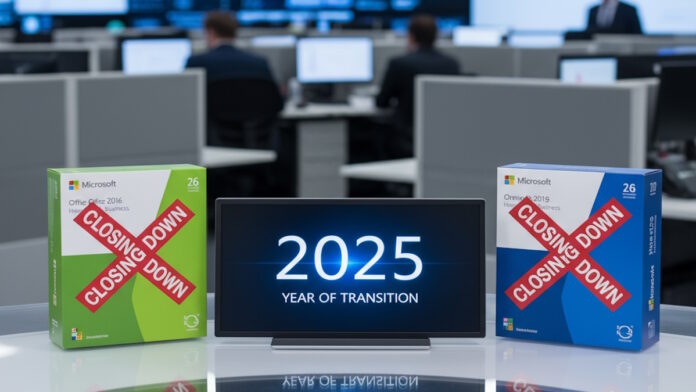Microsoft is preparing to close the chapter on two of its long-standing Office suites, Office 2016 and Office 2019. The Redmond giant has confirmed that both versions will officially reach the end of extended support on October 14, 2025.
After this date, while users can still open Word, Excel, or PowerPoint, the company will no longer provide security patches, bug fixes, or technical support, leaving them at risk if they continue using the aging software.
For those unaware, the mainstream support for Office 2016 and Office 2019 ended in October 2020 and October 2023, respectively, according to the company’s product lifecycle website.
“As previously communicated here and MC1056260 (April ’25), support for Office 2016 and Office 2019 will end on October 14, 2025. After that date, no further updates, security fixes, or technical support will be available for these versions of Office,” the company wrote in a Microsoft 365 message center update on Tuesday.
“While the applications may continue to function, using unsupported software could lead to potential security risks, compliance risks, system incompatibilities, and other issues.”
What Will Change After Support Ends
While the applications won’t suddenly stop working, the risks will rise. Microsoft outlined several key changes that will take effect:
- No more security updates – Newly discovered vulnerabilities won’t be patched, leaving systems vulnerable to malware and cyber threats.
- No bug fixes – Any glitches or performance issues will remain unaddressed.
- No technical support – Microsoft won’t provide troubleshooting help if something goes wrong.
- Loss of updates and documentation – Online resources and Microsoft Update channels for these versions will gradually disappear.
Why This Matters
Continuing to run unsupported software is risky, as outdated Office versions are easy targets for hackers, potentially leading to data breaches, productivity issues, and compliance violations, especially in business environments. Additionally, for individual users, unfixed bugs may slow down productivity or create compatibility issues with newer systems and apps.
What Should Users Do?
Microsoft is strongly encouraging users to move to Microsoft 365 Apps, its subscription service that includes always-current Office apps, security features, and cloud storage.
For those who prefer a one-time purchase, Office 2021 remains supported, while the newly released Office 2024 offers another option with updates until October 9, 2029. Enterprise and government customers can also consider Office LTSC 2024, designed for long-term use in secure or offline environments, which will also receive updates until October 9, 2029.
Further, the company also reminded customers that related apps like Visio 2016/2019 and Project 2016/2019 will also lose extended support on October 14, 2025.
The Bigger Picture
This reminder comes as part of Microsoft’s broader effort to move customers onto modern, cloud-connected tools. The company has also announced that Windows 10 support will end in 2025, alongside the phaseout of older Exchange versions.
The takeaway for both individuals and businesses is clear: plan your upgrade before October 14, 2025, as continuing to rely on outdated software is a security gamble that comes with serious long-term risks.

